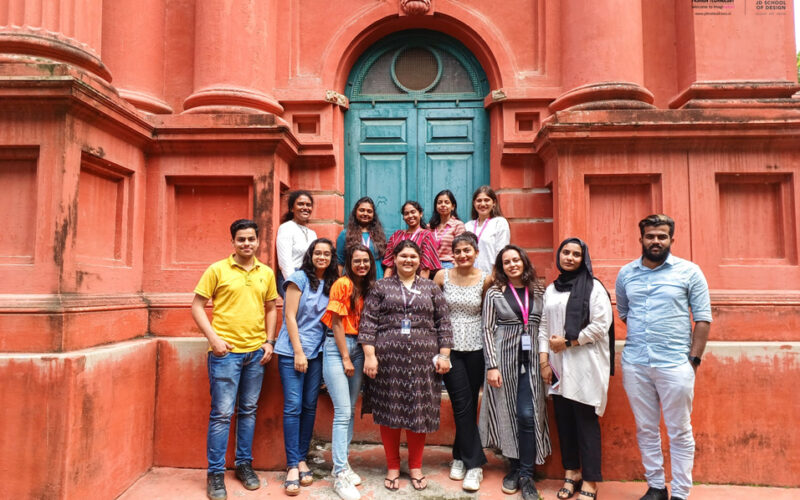The world of design is dynamic; it keeps changing day in and day out. To be successful, one cannot rely on mere theory; it needs hands-on experience through visits that will leave students with the zeal to observe, interact, and get involved in their fieldwork. It is through such visits that a designer’s journey begins. Experiential learning takes us outside the classroom and provides students with valuable exposure to the design industry through site and industry visits. This not only helps a student to learn but also to see things practically.
Outside the classroom: Site & Industry Visits
Learn by Seeing
Site visits are an integral part of our experiential learning. Students get to see real design applications upfront. It could be historical landmarks where one can see architectural wonders, the detailing in museum exhibits, or innovative structures in contemporary spaces. Through these visits, students get to see the principles of design in action. By observing how design concepts are executed in various contexts, students understand more about the practical aspects of their craft.
Industry Immersion
The site visits are further complemented through industry immersion, immersing the students in the professional design world. Such experiences are most valuable in understanding the inner functioning of design practices, right from conceptualization to realisation. Our students get to visit famous design studios, meet prominent industry professionals, and engage in meaningful conversations with them to gain insights into career opportunities and industry trends. Often, these interactions lead to networking possibilities and mentorship opportunities in the building of those very important connections crucial for future careers.
JD School of Design, powered by JD Institute of Fashion Technology: An Inside Look into a World of Exposure
Curated site visits
Our site visits at JD School of Design, powered by JD Institute of Fashion Technology, are designed in relation to our curriculum and the design disciplines offered. For example, interior design students will visit iconic architectural sites, while students of fashion design could visit textile museums or fashion houses. In such a way, these visits have been designed to complement class learning to put learning into context and provide practical examples for a better understanding of the chosen field.
Industry Tie-ups
These are made possible through our strong industry partnerships and design agencies. Students get exclusive tours, workshops, and lectures by accomplished professionals through such connections. The visits not only bring the students face-to-face with the current practices of the industries but also give a feel for the latest innovations and trends. Again, our alumni network is very crucial in such interactions with the sharing of experiences and advice.
Empowering Ability of Experience
Site and industry visits are not merely field trips; they make a lifetime of difference in enhancing a design education for a student. Such visits bridge the gap between theory and practice by allowing students to connect what is taught in the classroom with its application in practice. They enthuse creativity and innovation by opening a student’s eyes to different design styles and approaches. Furthermore, these experiences are part of building the professional network one needs, such as important contacts and insight into the later career paths that will be available to students.
A Look Ahead: More to Come
Experiential learning at JD School of Design powered by JD Institute of Fashion Technology is never stagnant; with every new collaboration and exploration, it transforms. Actually, on the list of upcoming site visits are the emerging design hubs, while others are studios known to break the mould in design. There is always something exciting coming up, so we encourage our students to stay curious and engaged—these experiences shape the kinds of designers we raise.
Site and industry visits are an integral part of the JD School of Design powered by JD Institute of Fashion Technology—this is not merely a curricular embellishment. Our philosophy as an education establishment has been to adopt all-around education that will help young minds cope with the challenges of the professional design world. We make sure that students are adequately knowledgeable, skilled, and networked by exposing them to a gamut of design practices and professionals.

